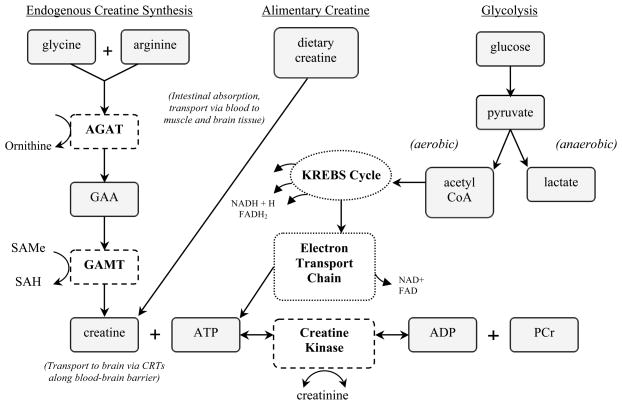Figure 1.
De novo synthesis of creatine and relation to ATP. The machinery needed to produce endogenous creatine (dashed boxes) and ATP (dotted boxes) is expressed within neurons, oligodendrocytes, and astrocytes, but it is unknown to what extent this arrangement contributes to total brain creatine content. ATP synthesis from carbohydrate (glucose) occurs via three series of metabolic pathways: glycolysis, citric acid cycle (Krebs), and the electron transport chain. When ATP is rapidly depleted, creatine kinase catalyzes the donation of a phosphate group from phosphocreatine (PCr) to ADP, producing more ATP to buffer energy needs. Conversely, when energy is released, an individual phosphate group is cleaved from ATP and bound to creatine to rejoin the PCr pool. This reversible reaction causes a spontaneous byproduct (creatinine) that is excreted from the body, which is why creatine must be replenished daily (AGAT = arginine:glycine amidino transferase; CRT, creatine transporter; GAMT, guanidinoacetate methyltransferace; GAA, guanidinoacetate; SAMe, s-adenylmethionine; SAH, s-adenosylhomocysteine).

